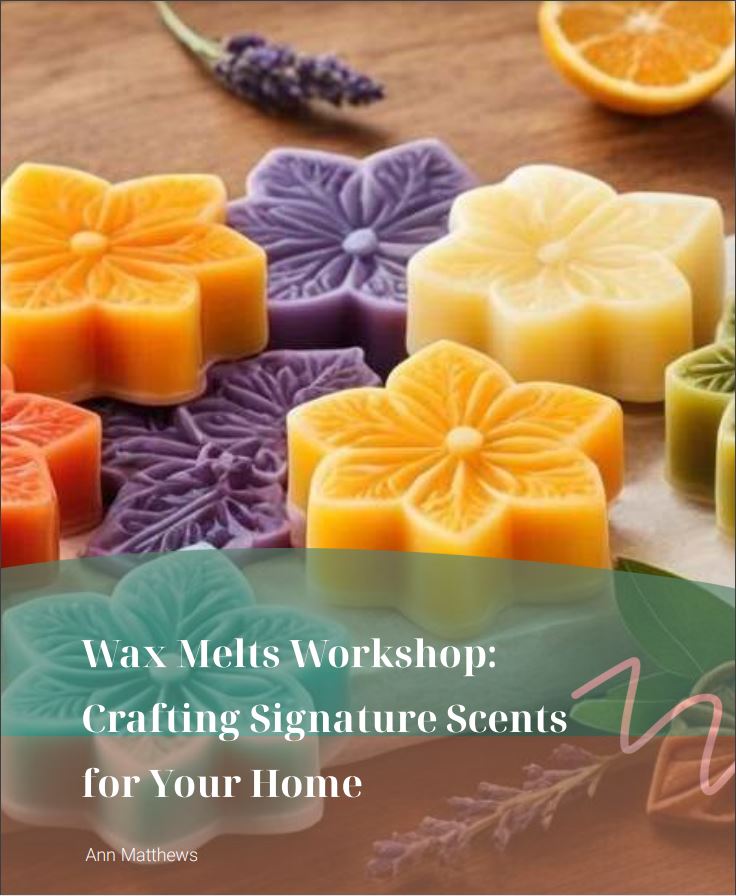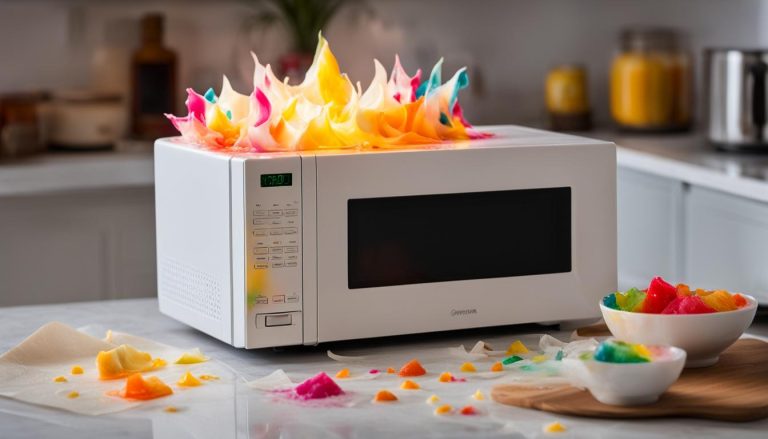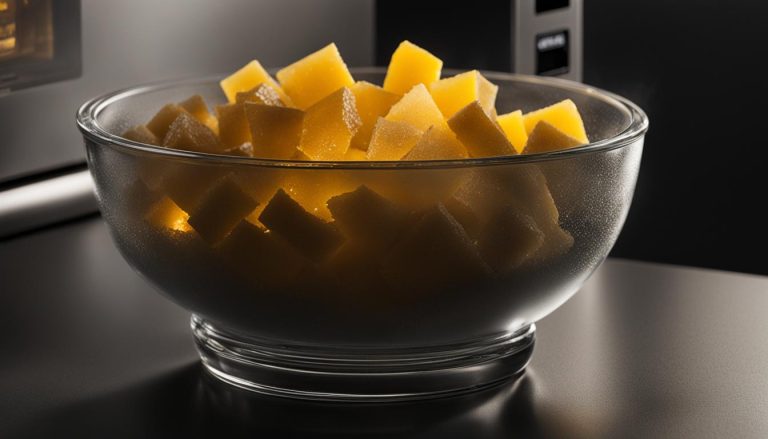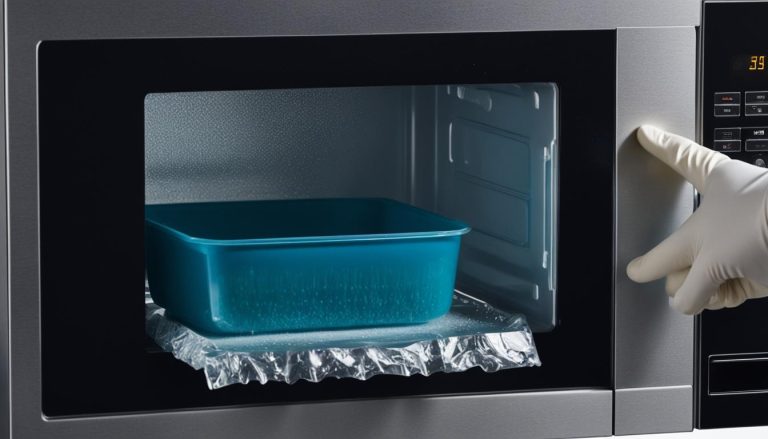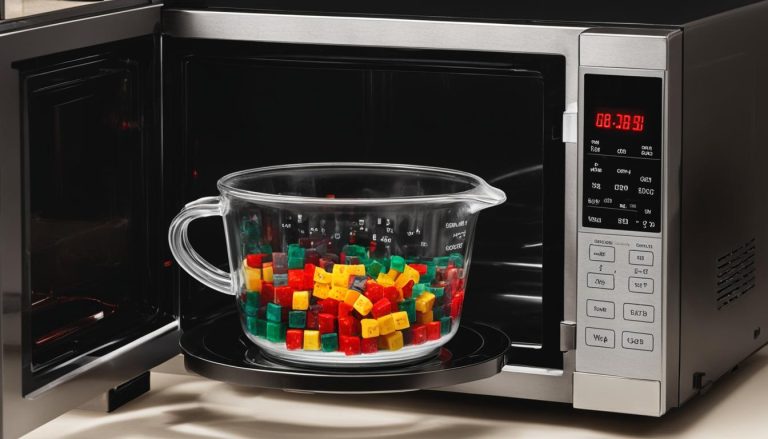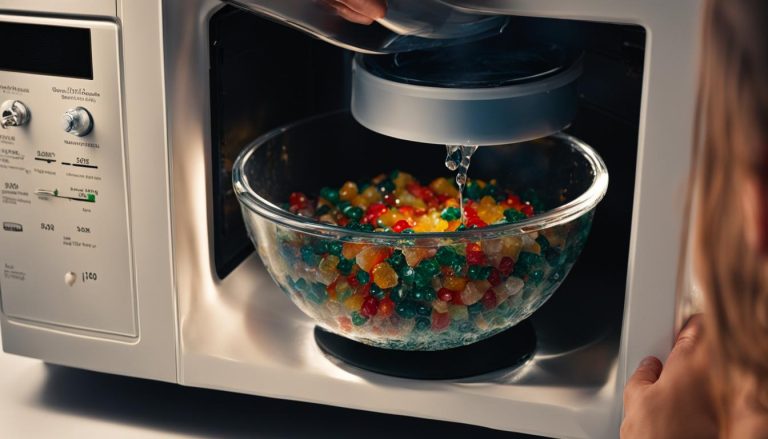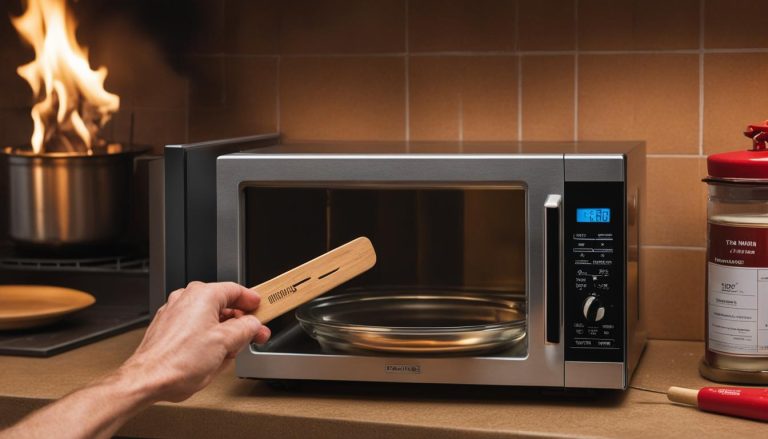Melting Wax in the Microwave: Safe Tips
waxmelts.info and its partners may earn a commission if you purchase a product through one of our links
When it comes to melting wax for DIY crafts and candle making, there are two popular methods: the double boiler and the microwave. The double boiler method involves using steam from hot water to melt the wax, while the microwave method offers a faster and more convenient way to melt wax without the need for a double boiler. It’s important to follow safe tips to ensure a successful and safe wax melting experience in the microwave.
Key Takeaways:
- With the microwave method, you can melt wax without a double boiler, saving time and effort.
- Always use a microwave-safe container for melting wax in the microwave.
- Monitor the temperature of the wax using a thermometer to prevent overheating.
- Stir the wax between heating intervals to ensure even melting.
- Follow safety precautions to avoid accidents and use heatproof gloves when handling hot containers.
How to Melt Wax in the Microwave
When it comes to melting wax quickly and conveniently, the microwave method is a game-changer. Whether you’re making candles or working on a crafts project, melting wax in the microwave can save you valuable time and effort. Follow these step-by-step instructions to achieve perfectly melted wax every time.
Gather Your Materials
To get started, you’ll need the following items:
- A microwave-safe container (such as a ceramic or glass dish)
- Wax for melting (candle wax, beeswax, or any other type of wax)
- A thermometer (to monitor the temperature)
The Melting Process
Now that you have your materials ready, follow these easy steps:
- Pour the wax into the microwave-safe container. Be sure not to exceed the container’s capacity.
- Place the container in the center of the microwave and cover it with a microwave-safe lid or wax paper.
- Set the microwave to medium power and heat the wax in 1-minute intervals.
- After each interval, check the temperature of the wax using a thermometer. You want to reach a temperature of around 80°C (176°F).
- Gently stir the wax with a non-metallic utensil to promote even heating.
- Continue heating the wax in 2-minute intervals, checking the temperature and stirring until the wax is completely melted and smooth.
Remember to always use caution not to overheat the wax, as this can lead to dangerous situations. By closely monitoring the temperature and following these steps, you can safely melt various types of wax in the microwave, including candle wax and beeswax.
Using the microwave method to melt wax offers numerous advantages. It’s a speedy and convenient alternative to traditional methods like the double boiler. You can quickly melt small quantities of wax without the need for specialized equipment. Additionally, melting wax in the microwave allows for more precise temperature control, resulting in better consistency and quality for your DIY projects.
Now that you know how to melt wax in the microwave, it’s time to get creative! Whether you’re making homemade candles, wax melts, or other wax-based crafts, this method will simplify the process and save you valuable time.
Tips for Melting Wax Safely in the Microwave
Melting wax in the microwave can be a convenient and efficient method. However, it’s important to prioritize safety when using this technique. Follow these tips to ensure a successful and safe wax melting experience in the microwave.
- Use a microwave-safe container: When melting wax in the microwave, always use a container that is specifically labeled as microwave-safe or heatproof. This ensures that the container can withstand the heat without melting or releasing harmful chemicals.
- Avoid using metal: Never use metal jugs or instruments when melting wax in the microwave. Metal can cause sparks and damage the microwave, leading to safety hazards. Stick to microwave-safe materials such as glass or ceramic.
- Monitor the melting process: It’s vital to keep a close eye on the wax while it’s being heated in the microwave. Avoid leaving the microwave unattended and check on the wax regularly. This helps prevent overheating and ensures that the wax melts evenly.
- Stir between heating intervals: To promote even melting, stir the wax gently between heating intervals. This helps distribute the heat more effectively and avoids hot spots in the wax. Use a non-metallic stirrer, such as a wooden or silicone spatula.
- Avoid overheating: Be cautious not to heat the wax beyond the recommended temperature for melting. Overheating can lead to accidents, such as wax splattering or containers becoming too hot to handle safely. Use a thermometer to monitor the wax temperature and remove it from the microwave once it reaches the desired melting point.
- Use heatproof gloves: Always prioritize safety when handling hot wax and containers. Protect your hands by wearing heatproof gloves or using oven mitts. This prevents burns and ensures that you can handle the hot wax safely.
Remember, safety should always be the top priority when melting wax in the microwave. By following these tips, you can enjoy the convenience of this method while keeping yourself and your surroundings protected.
| Benefits of Melting Wax in the Microwave |
|---|
| Convenience |
| Fast and efficient |
| Easy cleanup |
| Perfect for small-scale projects |
| No need for a double boiler |
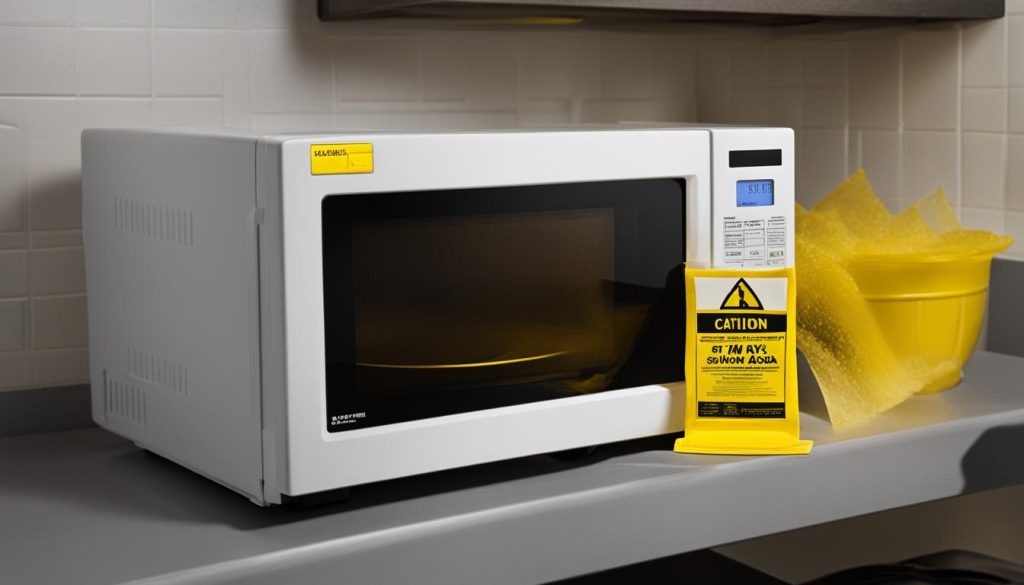
Temperature Considerations for Melting Wax
When it comes to melting wax, understanding the temperature requirements is crucial for achieving the desired results. Different types of wax have varying melting points, and it’s essential to know the specific temperature ranges to avoid overheating or inadequate melting. Let’s explore the temperature considerations for melting wax without a double boiler and when dealing with leftover candle wax.
Melting Points of Different Types of Wax
Wax Type | Melting Point Range
| Wax Type | Melting Point Range (°C) |
|---|---|
| Soy Wax | 49-82 |
| Paraffin Wax | 46-68 |
| Beeswax | 62-65 |
| Gel Wax | 82 |
As shown in the table above, soy wax has a melting point range between 49-82°C, while paraffin wax ranges from 46-68°C. Beeswax, another commonly used wax type, melts between 62-65°C. Gel wax, known for its unique characteristics, has a higher melting point at 82°C.
Melting Leftover Candle Wax
If you have leftover candle wax that you’d like to melt, there are two common methods to consider. The first method involves using a double boiler by placing the jar or container with the leftover wax in hot water. Gradually heat the water until the wax liquefies.
Alternatively, you can scoop out the leftover wax and transfer it to a microwave-safe container for melting. This method offers a quicker solution when compared to using a double boiler, especially when dealing with small quantities of wax.
Monitoring the Temperature
Regardless of the melting method employed, it’s crucial to monitor the temperature of the wax to achieve optimal results. To prevent overheating, use a thermometer to check the wax temperature regularly. Aim to keep the temperature within the recommended melting point range for the specific wax type being used.
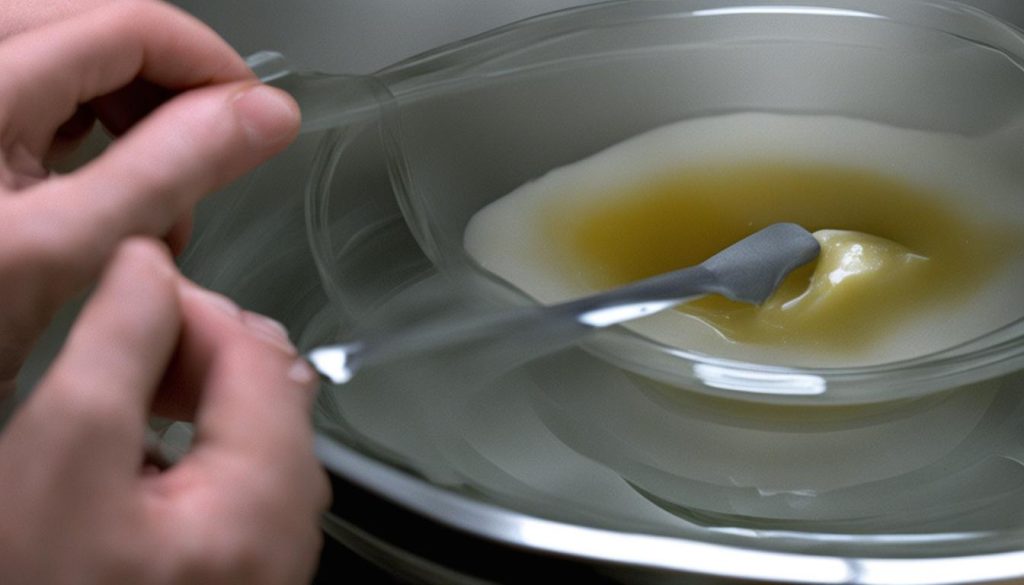
By carefully considering the temperature requirements for melting wax, you can ensure a successful and safe wax melting experience. Whether you’re using soy wax, paraffin wax, beeswax, or gel wax, understanding the melting points and employing the appropriate method will help you achieve the desired consistency and quality in your DIY projects and candle making endeavors.
Benefits of Melting Wax in the Microwave
Melting wax in the microwave offers a host of benefits, especially for those who are new to candle making or don’t have access to a traditional stove or double boiler. With this method, you can enjoy a quick, hassle-free way to melt wax, making it perfect for small-scale crafting projects and candle making endeavors.
All you need is a microwave-safe container and minimal equipment, making it a convenient option that can be done in even the smallest of spaces. Say goodbye to the need for hot objects and specialized wax-melting tools!
One of the advantages of melting wax in the microwave is the time saved. It eliminates the need for slow and laborious double boiler setups, allowing you to get straight to the fun part – creating your candles or crafts. Plus, the microwave’s even heat distribution ensures that the wax melts uniformly without the risk of scorching or burning.
FAQ
What is the safest way to melt wax in the microwave?
To safely melt wax in the microwave, use a microwave-safe container and heat the wax in intervals, stirring and monitoring the temperature with a thermometer.
How do I melt wax in the microwave?
Start by pouring the wax into a microwave-safe container and heat it in 1-minute intervals, checking the temperature until it reaches 80°C. Stir the wax gently and continue heating in 2-minute intervals until fully melted.
Can I melt beeswax in the microwave?
Yes, you can melt beeswax in the microwave. Follow the same steps for melting wax in the microwave and ensure you use a microwave-safe container.
What temperature does candle wax melt at?
The melting point of candle wax varies depending on the type of wax. Soy wax melts between 49-82°C, paraffin wax melts between 46-68°C, beeswax melts between 62-65°C, and gel wax has a higher melting point at 82°C.
How can I safely melt leftover candle wax in the microwave?
To melt leftover candle wax in the microwave, scoop it out of the jar and transfer it to a microwave-safe container. Heat the wax in intervals, stirring and monitoring the temperature to prevent overheating.
What are the benefits of melting wax in the microwave?
Melting wax in the microwave offers a quick and convenient alternative to the double boiler method. It is ideal for small-scale candle making and crafting projects, requires minimal equipment, and eliminates the need for specialized tools.

